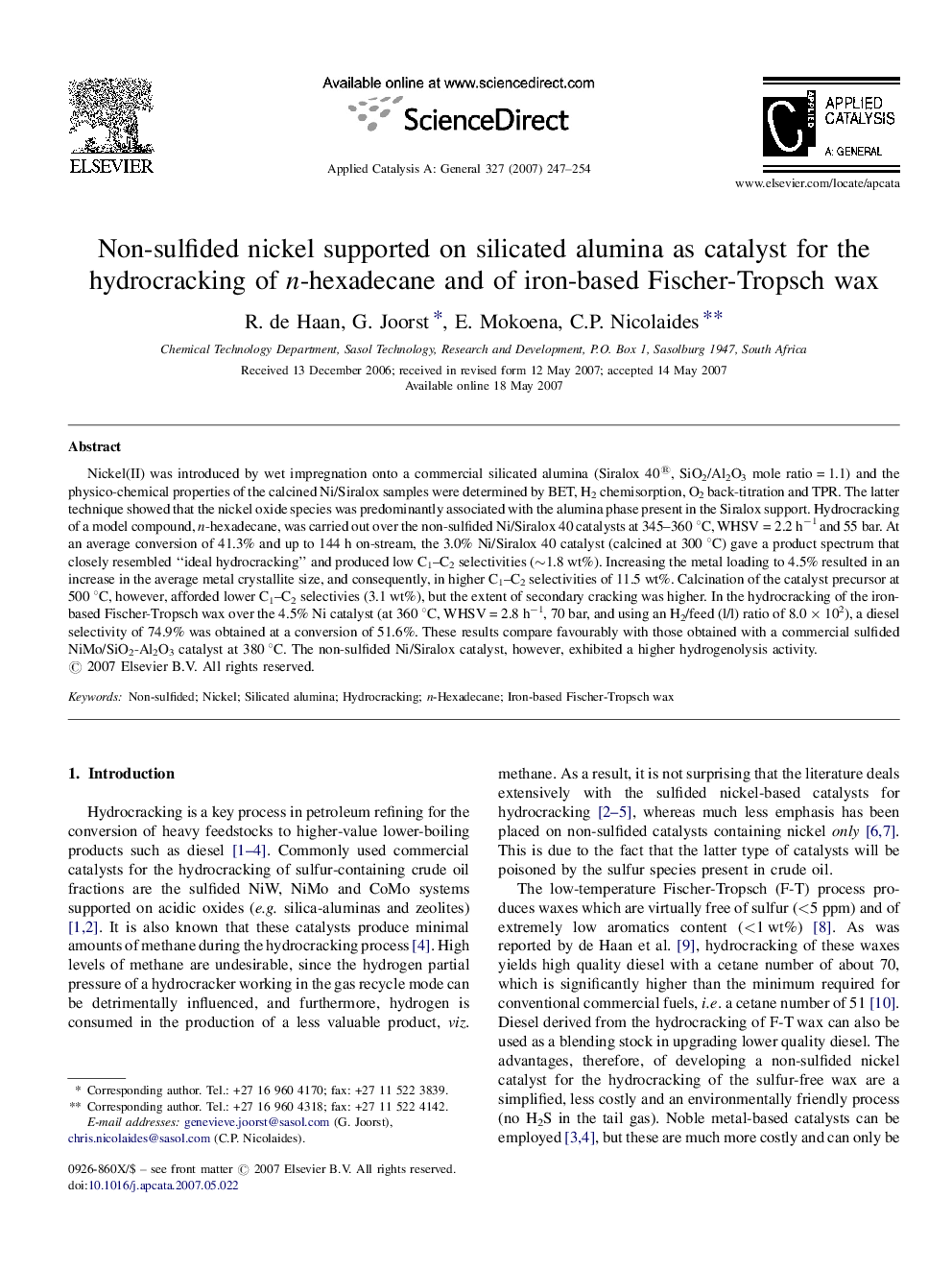| کد مقاله | کد نشریه | سال انتشار | مقاله انگلیسی | نسخه تمام متن |
|---|---|---|---|---|
| 44154 | 46005 | 2007 | 8 صفحه PDF | دانلود رایگان |

Nickel(II) was introduced by wet impregnation onto a commercial silicated alumina (Siralox 40®, SiO2/Al2O3 mole ratio = 1.1) and the physico-chemical properties of the calcined Ni/Siralox samples were determined by BET, H2 chemisorption, O2 back-titration and TPR. The latter technique showed that the nickel oxide species was predominantly associated with the alumina phase present in the Siralox support. Hydrocracking of a model compound, n-hexadecane, was carried out over the non-sulfided Ni/Siralox 40 catalysts at 345–360 °C, WHSV = 2.2 h−1 and 55 bar. At an average conversion of 41.3% and up to 144 h on-stream, the 3.0% Ni/Siralox 40 catalyst (calcined at 300 °C) gave a product spectrum that closely resembled “ideal hydrocracking” and produced low C1–C2 selectivities (∼1.8 wt%). Increasing the metal loading to 4.5% resulted in an increase in the average metal crystallite size, and consequently, in higher C1–C2 selectivities of 11.5 wt%. Calcination of the catalyst precursor at 500 °C, however, afforded lower C1–C2 selectivies (3.1 wt%), but the extent of secondary cracking was higher. In the hydrocracking of the iron-based Fischer-Tropsch wax over the 4.5% Ni catalyst (at 360 °C, WHSV = 2.8 h−1, 70 bar, and using an H2/feed (l/l) ratio of 8.0 × 102), a diesel selectivity of 74.9% was obtained at a conversion of 51.6%. These results compare favourably with those obtained with a commercial sulfided NiMo/SiO2-Al2O3 catalyst at 380 °C. The non-sulfided Ni/Siralox catalyst, however, exhibited a higher hydrogenolysis activity.
Nickel(II) was introduced by wet impregnation onto a commercial silicated alumina (Siralox 40). TPR showed that the nickel oxide species was predominantly associated with the alumina phase present in the Siralox support. Hydrocracking of a model compound, n-hexadecane, and of iron-based Fischer-Tropsch was carried out over the non-sulfided Ni/Siralox 40 catalysts. The product selectivities obtained at different metal loadings, crystallite sizes and calcination temperatures are described. The results are also compared with those obtained with a commercial sulfided NiMo/SiO2-Al2O3 catalyst.Figure optionsDownload as PowerPoint slide
Journal: Applied Catalysis A: General - Volume 327, Issue 2, 15 August 2007, Pages 247–254